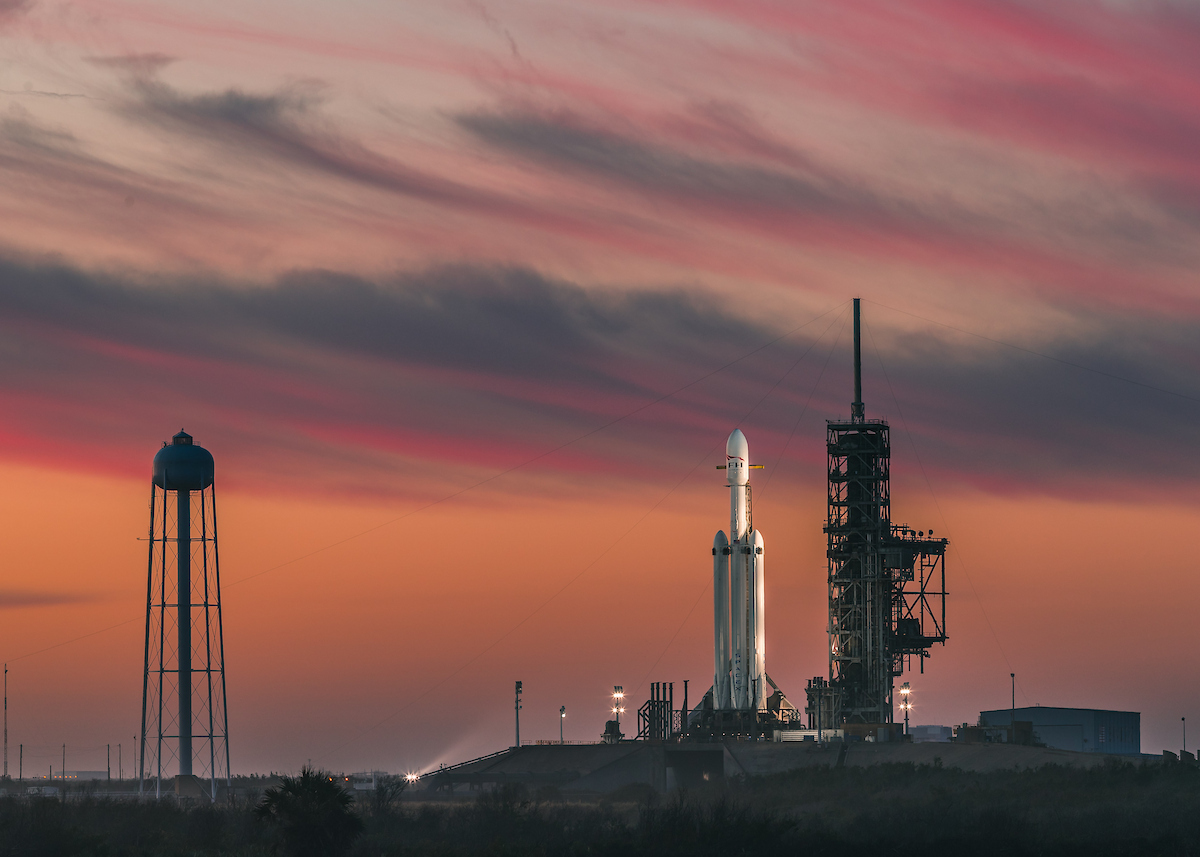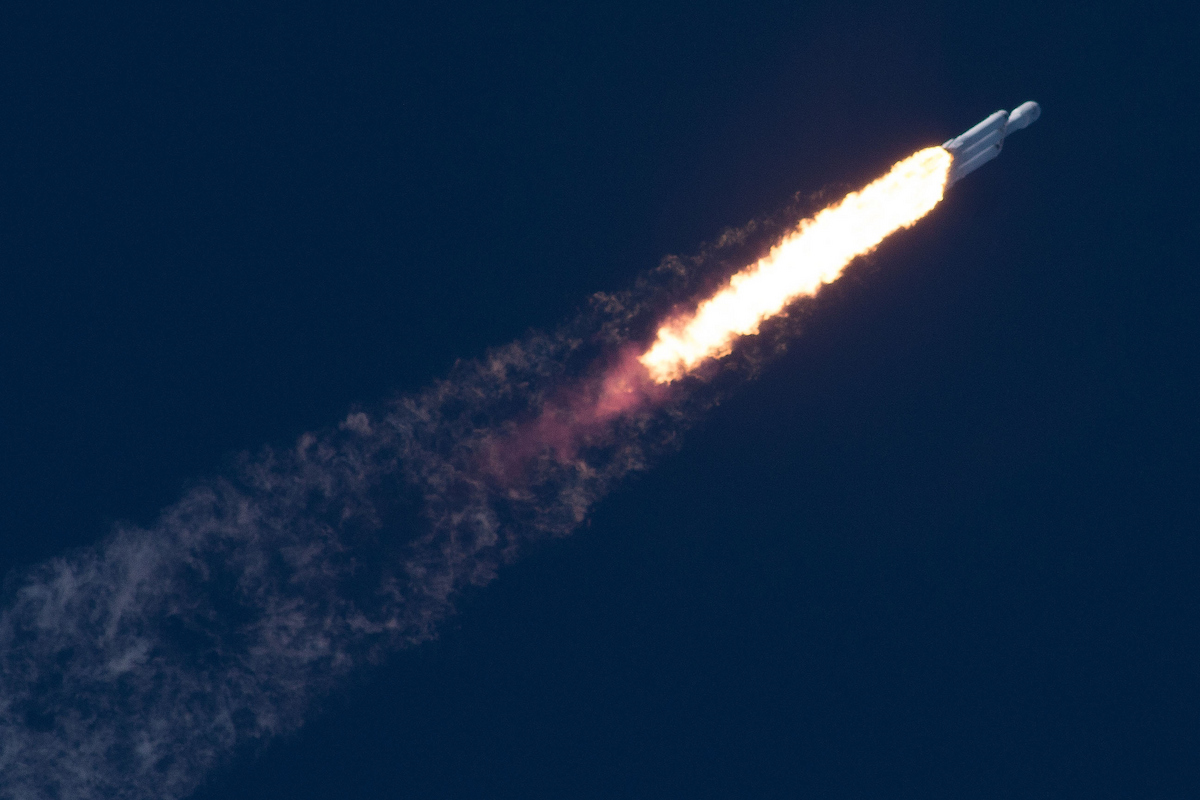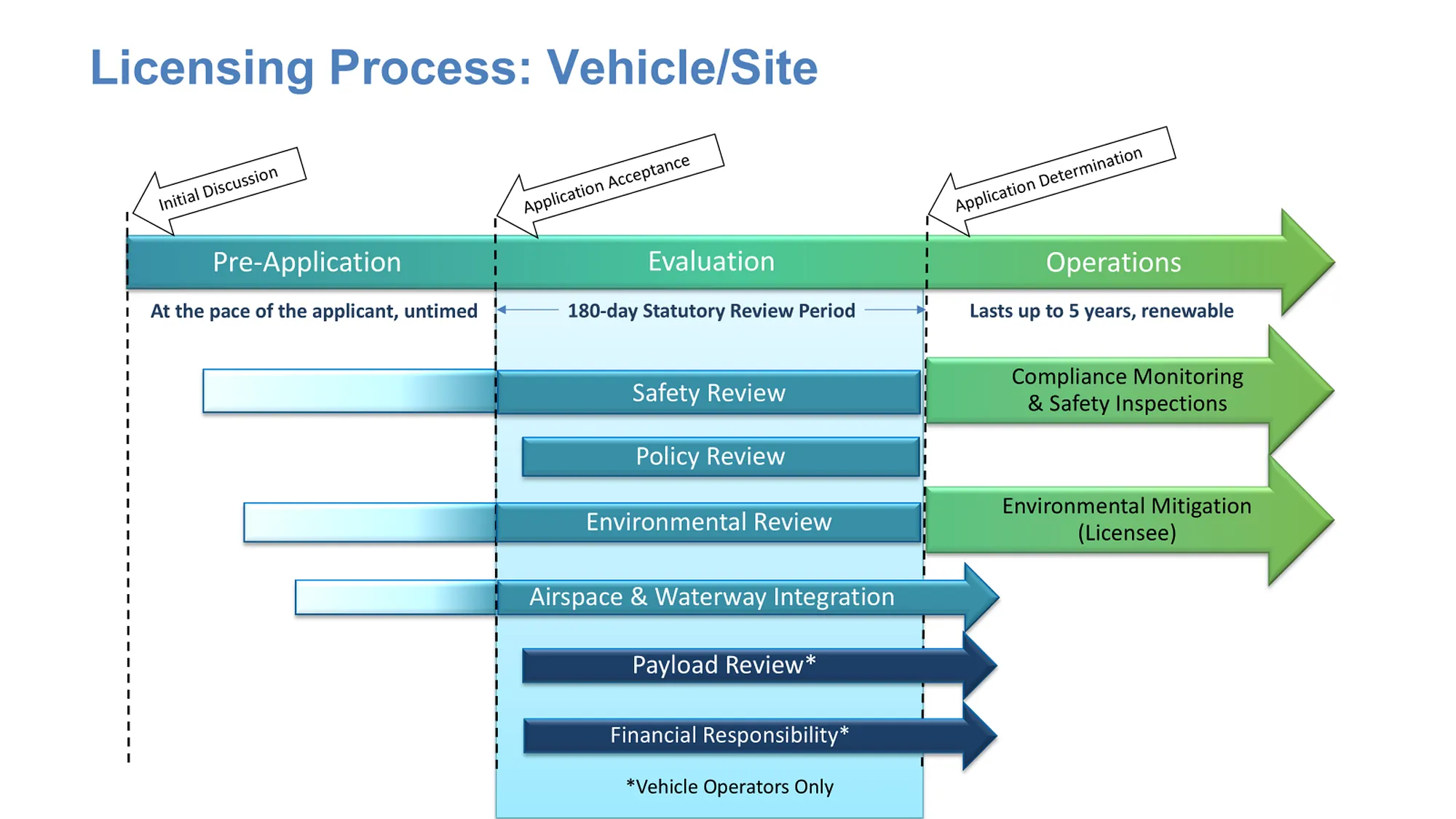The Star Power Behind a Commercial Space Launch License

Commercial space operations in the United States have experienced a tremendous surge since 2020, increasing about 30 to 40 percent each year, as more companies and new missions enter the quickly evolving industry.
“The demand for innovation is steadily increasing, and the FAA is committed to exploring opportunities that will propel us into the next frontier of space travel and exploration,” said Minh Nguyen, acting Deputy Associate Administrator for the FAA’s Office of Commercial Space Transportation.
The star power behind commercial space operations are the dedicated employees in the Office of Commercial Space Transportation who evaluate, license, and authorize these operations. Ensuring safe space transportation to protect public safety, property, and national security and foreign policy interests of the United States are at the heart of FAA’s regulatory role.
Boasting nearly 1,000 operations since the first FAA-licensed launch in 1989, the agency’s expertise and dedication to safe space operations have made private space transportation possible, while maintaining an exceptional public safety record.
“Regulation contributes to safety, fairness, and confidence in commercial space transportation,” said Katie L. Cranor, acting Executive Director of the Office of Operational Safety. “Building regulatory compliance into their process eases unnecessary regulatory burden.”
Checklists, Checklists, Checklists
The commercial space office ensures that risk to the public on the ground, on the sea and in the air is limited by requiring license applicants to demonstrate compliance with a performance-based licensing regulation known as Part 450, which all operators must follow by March 2026. It aims to reduce duplication, consolidate requirements, and remove constraints, while allowing operators to safely innovate.
Commercial operators often start the licensing process through the get started with licensing web page. It provides assistance from the pre-application process, including checklists to ensure operators meet all requirements. The licensing application process varies in duration based on the operator’s experience and readiness.
Operators must demonstrate they’ve conducted risk assessments and taken necessary actions to minimize risks. Once the FAA accepts the application, it has up to 180 days to make a license determination.

License to Launch and Continuous Process Improvement
The evaluation process involves five key steps:
- Safety Review/Risk Assessment: FAA assesses whether the operation can be safely conducted within acceptable casualty criteria and impact probabilities. Evaluators ensure flight safety analyses accurately model hazards and residual risks.
- Environmental Review: FAA evaluates potential environmental impacts of launch or reentry activities in areas like air quality, water quality, wildlife, and noise, complying with the National Environmental Policy Act (NEPA). This step involves public disclosure and input.
- Policy Review: FAA examines national security or foreign policy issues, normally allowing 21 days for government partners to review specific interests.
- Payload Review: FAA evaluates whether the payload contains hazardous materials and assesses its lifetime and disposal plan.
- Demonstration of Financial Responsibility: Operators must demonstrate financial means, typically through insurance, to compensate for harm or damage from commercial space activities. The FAA calculates maximum probable loss to set insurance coverage limits.

An FAA-issued license is valid for five years, authorizing single or multiple operations.
“We have found that applicants who come prepared with high-quality safety analyses get through the process faster,” Cranor said. “Some operators are moving toward comprehensive processes that span multiple missions, yielding multi-mission approvals.”
The commercial space team uses each application evaluation to improve processes and addresses feedback by clarifying requirements, updating guidance, and conducting customer workshops to stay agile in the dynamic commercial space industry.
LEAPing into Automation
One example is the License Electronic Application Portal (LEAP), a software tool the commercial space team is developing to streamline and standardize the flow of information between applicants and FAA evaluators.
“Applicants will be able to upload documents into LEAP and link to resources that help applicants demonstrate compliance with each regulation,” said Randy Repcheck, acting Executive Director of the Office of Strategic Management. “This tool will provide a centralized source for hosting documentation and feedback, streamlining communications and improving FAA’s responsiveness.”
The portal will be in beta testing by the end of this fiscal year and will be available in full production by mid Fiscal Year 2026.
Leading in Space Safety
To continue to meet demand and set effective safety standards, the FAA launched an Aerospace Rulemaking Committee (SpARC 450) to make recommendations to improve Part 450 efficiency. The committee is focused on topics, including flight safety analyses, system safety, and means of compliance.
The FAA continues to enable the commercial space industry to innovate and conduct diverse operations, such as launching internet satellites, lunar and interplanetary missions, and of course, space flight tourism. We are steadfast in our commitment to providing the safest, most efficient national airspace system — to include enabling safe space operations.
